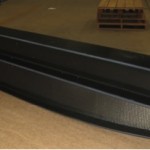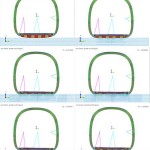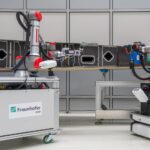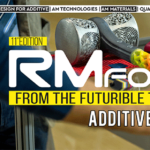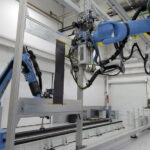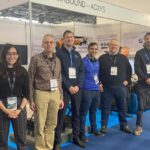NASA recently conducted a full-scale transport helicopter crash test to evaluate new technologies to save lives. Included in the test was a novel energy absorbing sub-floor beam designed and manufactured under the CRC-ACS research program.
Within CRC-ACS Project 2.1 – Systems for Crashworthiness, design tools and technologies have been developed to retrofit older airframes to deliver improved crashworthiness. Much of this effort has focused on the development and validation of lightweight composite energy absorbers ideally suited to weight critical applications such as aircraft and helicopters.
The NASA Transport Rotorcraft Airframe Crash Testbed (TRACT) program utilises CH-46 transport helicopter airframes to evaluate the effectiveness of new technologies to improve crashworthiness and survivability under realistic crash conditions. The first test was undertaken at NASA Langley’s Landing and Impact Research (LANDIR) facility in October 2013 and featured a range of energy absorbing seats fitted with crash test dummies. A video of the test can be found here.
In February 2014, NASA, DLR and CRC-ACS formed an agreement to cooperate on the development of a retrofit crash management structure to fit into the second TRACT test. The invitation from NASA to participate in the test stemmed from the outstanding work conducted in crashworthiness and composite structures in the CRC-ACS research program.
Design of the structure was completed using advanced simulation techniques in the explicit finite element software PAM-CRASH. The methods developed within the CRC-ACS program enable the crushing of the composite components and the associated energy absorption to be accurately modelled. Simulations of a barrel section of the fuselage were used to optimise the design of the floor beam under the expected crash conditions, as shown in Figure 1. The structure features an integrated corrugated energy absorber and is fastened into the existing aluminium airframe.
The manufactured floor beam, shown in Figure 2, was shipped to the US for fitting into the second TRACT airframe. This was installed alongside two other composite floor beam concepts designed and manufactured by NASA. Preparation of the test article then included fitting the floor, seats, dummies, instrumentation and video cameras. The test was conducted on 1 October 2014 and a video of the test can be found here.
Over the coming weeks, data from the test will be analysed and post-test simulations conducted to validate the design tools. The insights gained through participation in this full-scale crash test will be invaluable in further maturing technologies to retrofit airframes for improved crash safety.
Fonte: CRC-ACS



